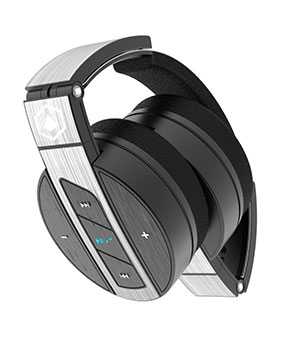You’re probably tired of people mentioning that you need to be careful with your hearing. However, and seeing the number of people with hearing problems increasing year after year, we just need to make sure that you are well aware of the situation.
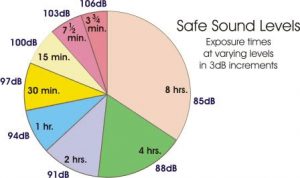
Not all noises are bad or harm you. In fact, for a loud noise to permanently harm your hearing, it needs to be a constant for a couple of hours each day. Depending on how loud the noise is, your hearing may start to be affected sooner or later at the time.
Discover here the best headphones based on user reviews.
The main problem with defining safe decibel levels is that since you’re already so used to some noises, that you no longer consider them harmful. However, some of them can be.
When you grab your lawnmower to cut the lawn in the summer, you probably don’t notice the extremely loud noise it makes. After all, it’s just one more task you need to do and manufactures should have taken care of having them with safe decibel levels. However, they haven’t. And your hearing is the one that is getting affected if you don’t wear and hearing protection device.
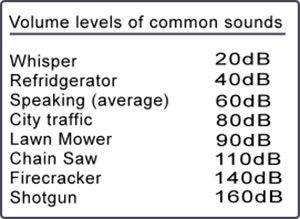
But there is also another point that is worth to be mentioned. People’s ears are not all the same. Some people have more sensitive ears than others. Just think about people who are more prone to have swimmers’ ear. They have more sensitive ears than someone who can dive in the lake or at the pool and their ears don’t get affected.
But how can you tell if a particular noise is at safe decibel levels?
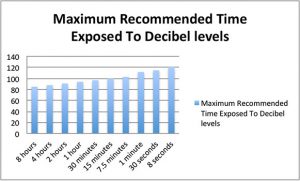
The best thing you can do is to put things in perspective. For example, a normal conversation is usually about 60 decibels. Although, the lawnmower that we mentioned earlier, is about 90 decibels. And if you’re looking to have fun and you want to attend a rock concert, you can expect for it to be about 120 decibels.
As a rule of thumb, you should consider that 85 decibels or above are harmful to your hearing. However, this depends on the time you’re exposed to them and at how much distance from the origin of the noise.
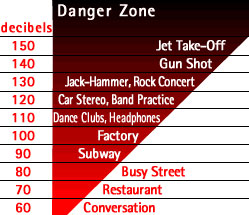
Another thing you can use to have a better idea regarding the safe decibel levels is to look at a hearing loss decibels chart. Hearing loss decibel charts will give you a pretty good idea about what kind of noises may harm more or less your audition as well as the ones you need to be especially careful about.
Here’s an example of a hearing loss decibels chart so that you can have a better idea:
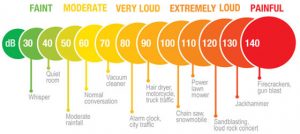
In order to protect your hearing, you should always wear some hearing protection device when you’re near a sharp and loud noise. Although only listening to some sharp noise may only affect your hearing temporarily, when there is an activity that you usually do and that requires you to be next to a loud noise for some hours in a row, make sure to get yourself a high-quality hearing protection device.
